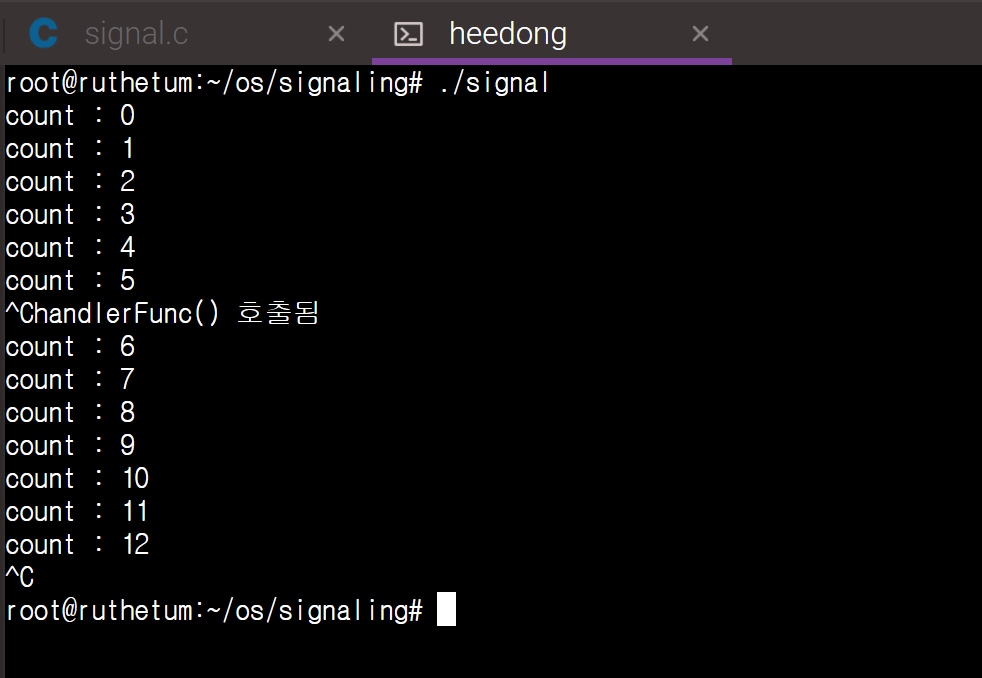Signaling 예제 코드
#include <stdio.h>
#include <stdlib.h>
#include <string.h>
#include <unistd.h>
#include <signal.h>
// 핸들러 함수 정의
void handlerFunc(int sig) {
printf("handlerFunc() 호출됨\n");
// SIGINT : 터미널 인터럽트
// SIG_DFL : 기본 행동 수행, 메인 함수가 하던 일을 계속 수행하고 한 번 더 SIGINT가 오는 경우 프로세스 종료
signal(SIGINT, SIG_DFL);
}
int main() {
// SIGINT(키보드 인터럽트) 신호를 받으면 handlerFunc 수행
signal(SIGINT, handlerFunc);
int count = 0;
while(1) {
printf("count : %d\n", count++);
sleep(1);
}
exit(0);
}
실행 결과

시그널 타입
- SIGINT : 키보드 인터럽트
- SIGFPE : 부동 소수점 예외
- SIGKILL : 프로세스 종료
- SIGCHLD : 자식 프로세스가 정지 또는 종료
- SIGSEGV : 세그먼트 오류(비정상 종료, 메모리 엑세스 오류)
